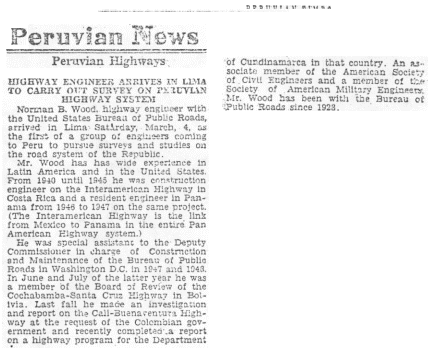| << Previous | Contents | Next >> |
The Trailblazers
Inter-American Highway Background
By
Norman Wood
The objective of the Inter-American Highway was to link the United Sates to Mexico City and the capitol cities of the Central-America republics and Panama by paved highway. The program was initiated in 1932 and finally accomplished in 1967, when the final construction north of Panama City was completed. Mexico constructed and pad for their some 1,600 miles between Laredo, Texas, and the Guatemala border. The some 1,600 miles between Guatemala north border and Panama City was accomplished with United State and cooperating republics' funds.
The Bureau of Public Roads was designated as the U.S. cooperating agency on all matters related to the survey, design and construction of the highway. Progress was rather slow until from 1932 to 1942. During this first ten years, route location was accomplished and was perhaps one of the first attempts to do this with aerial photography. U.S. Army photoreconnaissance and aerial mapping photos were used. The aerial mapping effort was a separate and unrelated cooperative project between the U.S. and several republics.
Initial construction was several bridges across some of the principle rivers - accomplished by cooperative agreement between BPR and the cooperating republic - whereby BPR (U.S.) furnished all structural steel, cement and other materials necessary to be imported by the cooperator, with all labor and local materials furnished by the cooperator.
In 1940, the war clouds of World War II precipitated a whole new concept of the need for land access between the U.S. and the Panama Canal and work was stepped up to the extent the cooperating republics were able to finance their funds requirements. After Pearl Harbor and during World War II, accelerated work on the highway was a part of the war effort, but with the ending of the war, U.S. funds were curtailed and progress again slowed down until final completion in 1967.


